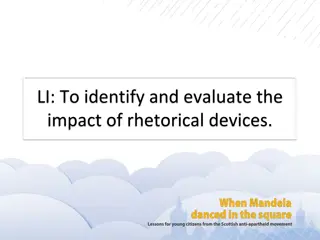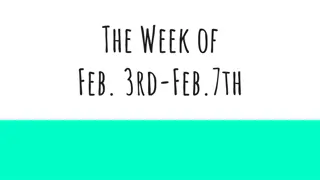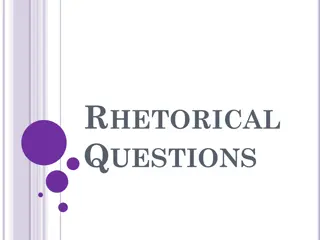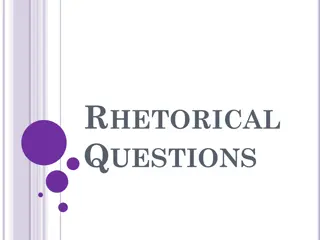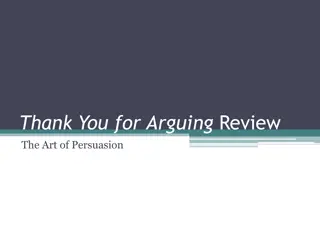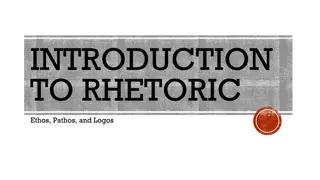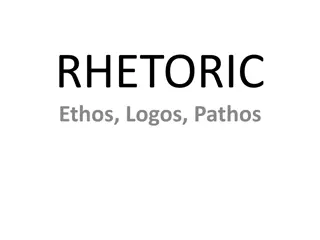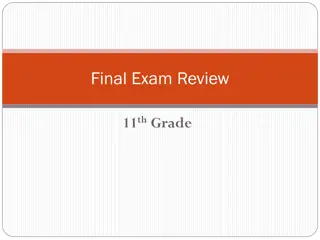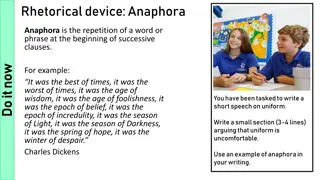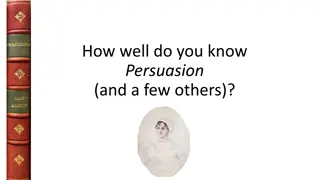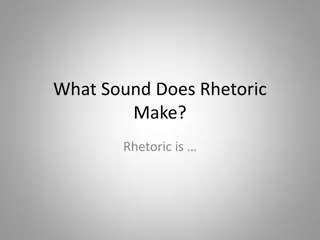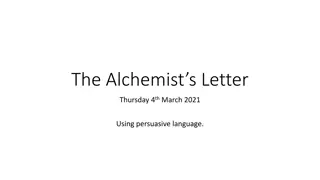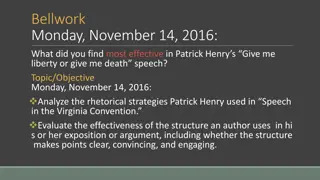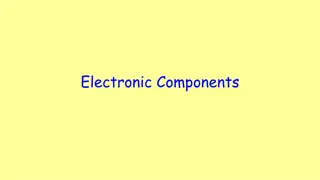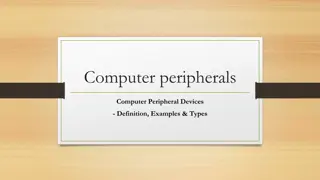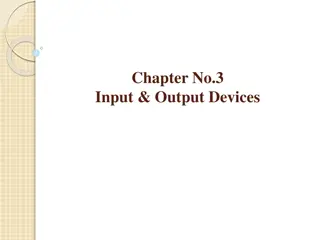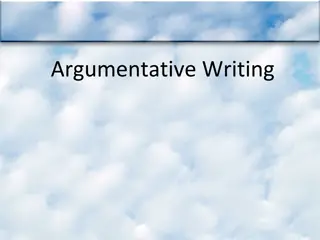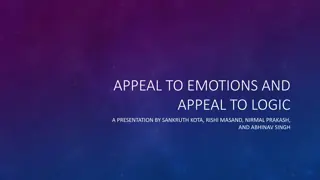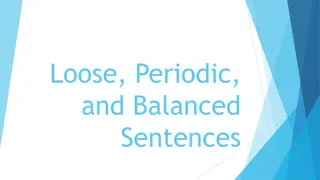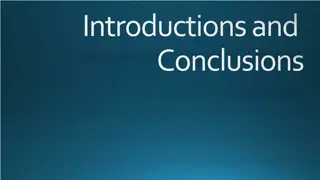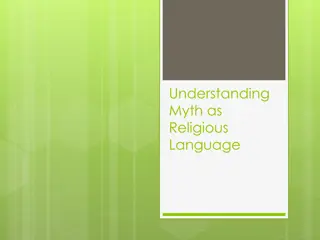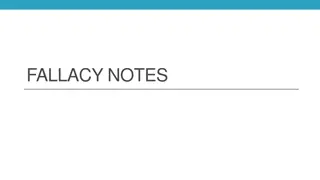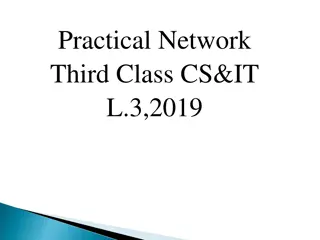Mastering Rhetorical Devices for Persuasion
Understand the art of rhetoric and the power of persuasion through ethos, pathos, and logos. Explore how writers use varying techniques like formal word choice, emotional appeal, and allusion to sway audiences. Delve into the persuasive appeals of ethos, pathos, and logos as explained by Greek philosopher Aristotle. Enhance your communication skills and effectiveness in conveying ideas convincingly.
Download Presentation

Please find below an Image/Link to download the presentation.
The content on the website is provided AS IS for your information and personal use only. It may not be sold, licensed, or shared on other websites without obtaining consent from the author. Download presentation by click this link. If you encounter any issues during the download, it is possible that the publisher has removed the file from their server.
E N D
Presentation Transcript
RHETORICAL DEVICES FOR PERSUASION
WHAT IS RHETORIC? The art of effective expression (speaking & writing) and the persuasive use of language We study rhetoric because: It helps us to better appreciate appeals to our ethos, pathos, & logos It helps us to become more effective persuasive speakers and writers
THINK ABOUT IT In what ways do writers use persuasion? (1 minute) List three ways in your notes then share with your group (2 minutes)
EXAMPLES: Formal word choice leads readers/listeners to believe something is ethically or legally important Emotional word choice (sometimes called sensationalism ) leads readers/listeners to recognize that ideas expressed are important to the writer/speaker Allusion can associate a new idea to a traditionally respected source For example: If a teacher was trying to persuade students to do well on their AP exams, he or she might state, The score you receive on your exam will determine the college you are admitted to or the scholarship money you will receive.
ETHOS, PATHOS, AND LOGOS Greek philosopher, Aristotle, argued that there are three basic ways to persuade an audience that you are right. https://www.youtube.com/watch?v=9L_G82HH9Tg
ETHOS Persuasive appeal of one s character. Tells us that the author is reliable and competent. Example: For most politicians, ethos has already been established before a debate or campaign (i.e. When I was the governor of Arizona, I passed a bill that stated or My record shows that )
PATHOS Appeal to emotion (of course, meant to evoke emotional response) This is the bread and butter to a politician and can be used to sway an audience quickly with personal stories.
LOGOS Appeal to reason (evokes a rational response) that may also utilize facts and statistics It is often used to set a specific tone or bring legitimacy to an already established pathos. https://www.youtube.com/watch?v=wc1TrKIzAJM
ADDITIONAL FORMS OF RHETORICAL DEVICES FOR PERSUASION Alliteration Occurs when a series of words in a row (or close to a row) have the same first consonant sound. Example: "This generation of soldiers, sailors, airmen, Marines, and Coast Guardsmen have volunteered in the time of certain danger. They are part of the finest fighting force that the world has ever known. Barack Obama Fort Hood Memorial Speech Repetition/ Parallel Structure The repetition or restatement of an idea not only promotes clarity, but encourages the acceptance of an idea. Thus, other competing ideas seem inferior and are sometimes driven completely from of the audience's mind. Example: serve together and fight together and bleed together.
ADDITIONAL FORMS OF RHETORICAL DEVICES CONTINUED Metaphor The use of metaphors can often lure someone to your side as it illustrates strength or weakness Example: Obama describes a light military strike as being a pinprick and stated that, Let me make something clear: The United States military doesn t do pinpricks. Rhetorical Question A question that does not expect an answer. The speaker is implying that the answer is too obvious to require a reply or merely as a way of making a point. Example: Can we agree that this will not happen again? Or How can I ever repay you? Or What were you thinking?!?
ADDITIONAL FORMS OF RHETORICAL DEVICES CONTINUED Allusion: Using historical references or literary references Example http://www.newyorker.com/online/blogs/hendrikhertzberg/ 2013/01/obamas-inaugural-allusions.html
LETS ANALYZE A FEW COMMERCIALS TO DETERMINE THE TYPE(S) OF RHETORIC BEING USED: NUMBER YOUR PAPER 1-12 HTTPS://WWW.YOUTUBE.COM/WATCH?V=SFAXUPEVHCG&LIST=PLUT_PBZQ ZJ_D7WPFNSX-M9HO1PFCQ_CGG&INDEX=1


